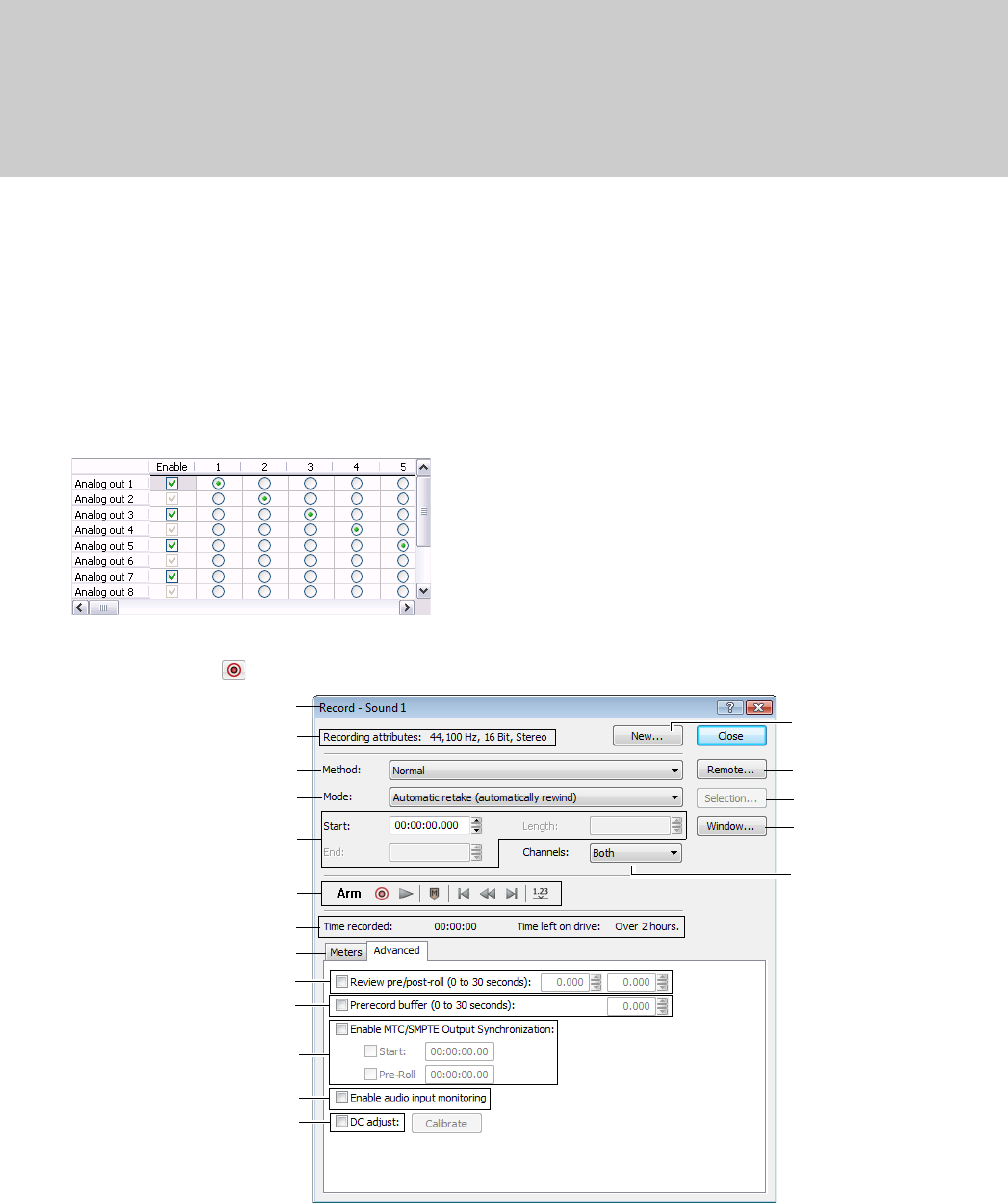
Recording manually
You can record into an existing window or create a new window at the time of recording. If you have an audio device that supports
multiple inputs, you can use Sound Forge to perform multichannel recording.
Tips:
• Sound Forge is not a multitrack editor. Check out our Vegas and ACID families of products for full multitrack recording and editing. You
can use multichannel recording to create surround audio or capture field recordings.
• If you experience gapping or glitching when recording multichannel audio, try increasing your buffer size. You can increase the Record
buffering setting on the Audio tab of the Preferences dialog or click the Advanced button on the Audio tab of the Preferences dialog
to increase your device’s buffers.
1.
Connect your audio sources to your sound card’s inputs. For more information on connecting audio sources, refer to your sound card’s
user documentation.
2.
Enable your recording inputs:
a.
From the Options menu, choose Preferences, and click the Audio tab.
b.
Choose your recording device from the Audio device type drop-down list.
c.
Click the Record tab.
d.
Select the Enable check box for each input you want to enable for recording, and then select a radio button to assign the input
to an audio channel.
In the following example, the signal from Analog in 1 is recorded to channel 1, Analog in 2 is recorded to channel 2, and so on.
e.
Click OK to close the Preferences dialog and save your changes.
3.
Click the Record button ( ) on the transport bar, or press Ctrl+R. The Record dialog is displayed.
Recording attributes
Title bar
Recording method
Recording mode
DC adjust
Punch-in spinners
Transport bar
Recording time
Pre/post roll
Prerecording buffer
Click to view meters and meter reset
MTC/SMPTE
sync settings
Record to new window
Set selection
Remote recording
Set recording
destination window
Input monitoring
Channel selection
136 | CHAPTER 8
